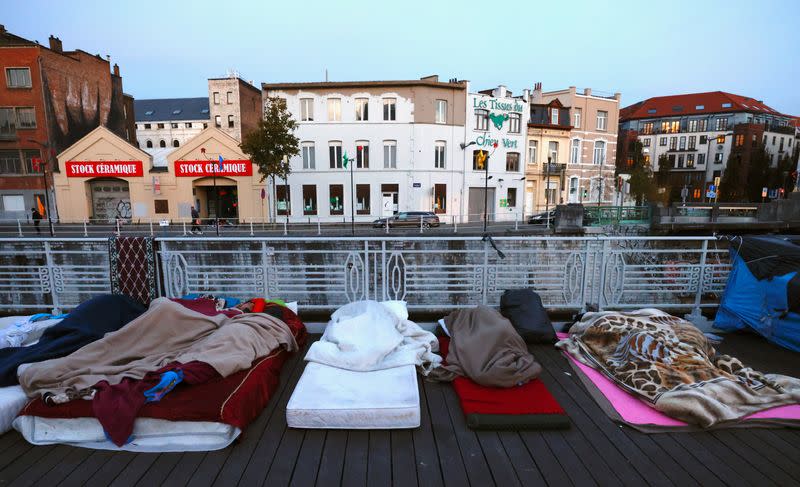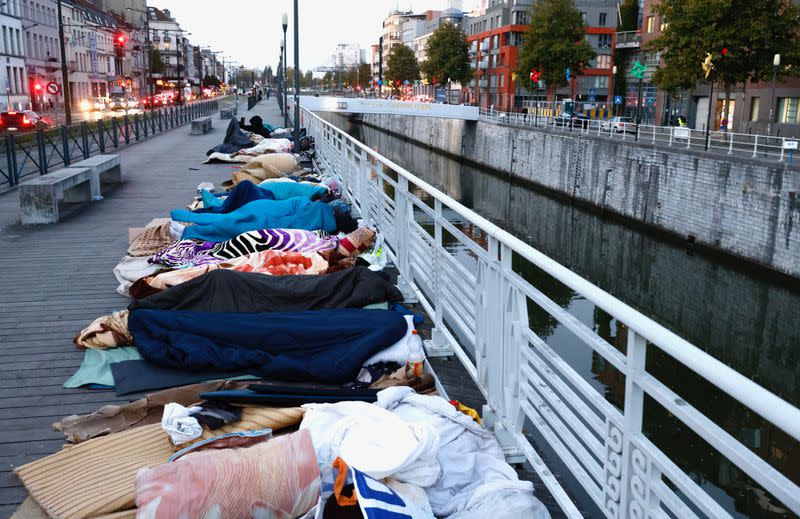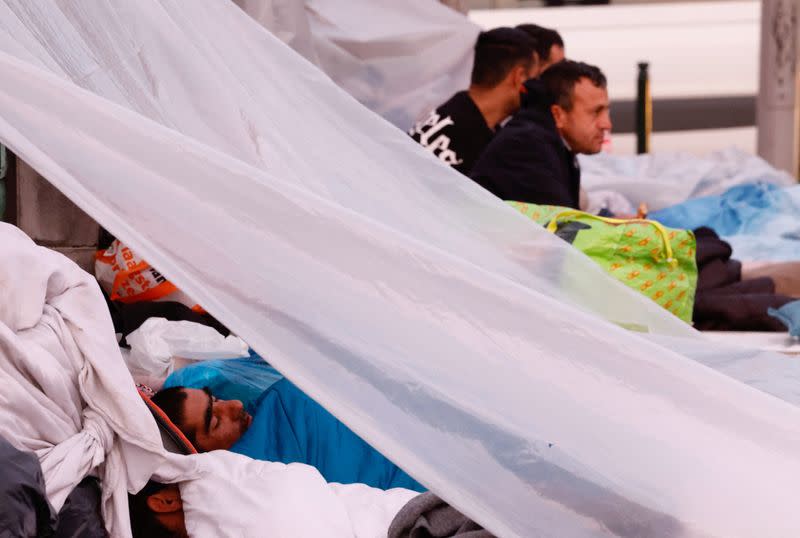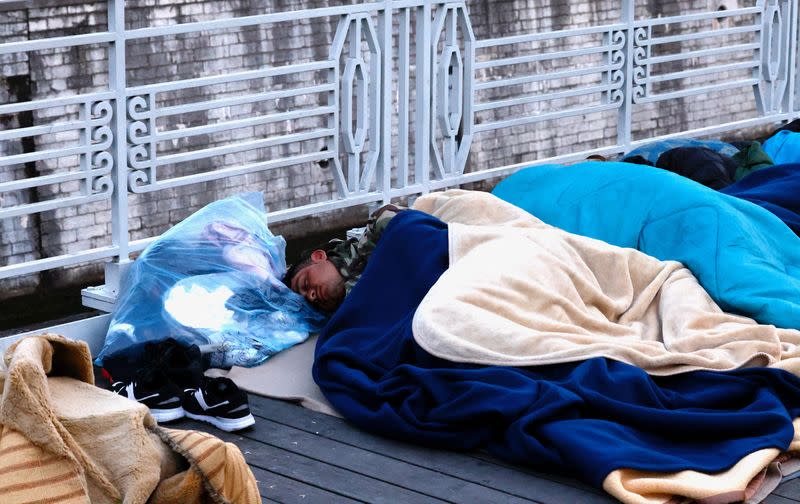Asylum seekers shelter in Brussels squat as Belgian asylum system comes under strain
By Jakob Van Calster and Bart Biesemans
BRUSSELS (Reuters) - With Belgium's asylum system under severe pressure, some 200 asylum-seekers are squatting in a large empty building in the centre of Brussels that was originally being renovated for Ukrainian refugees.
The current residents, mainly Burundi and Afghan nationals, maintain the building with the help from NGOs, which say Belgium is not complying with their legal obligations.
People who request asylum in Belgium are entitled to shelter but Fedasil, the agency responsible for this, has been struggling with a shortage of staff as well as a shortage of accommodation, leaving some - including women and children - to sleep in the street.
"It's getting worse, and so the only solution that people have is to squat somewhere," lawyer Marie Doutrepont, who represents the squat residents, told Reuters.
Squat resident and Burundi national Gauthier Kwizera, 28, said he was homeless for weeks after being told that Fedasil had no accommodation for him.
"We didn't know where to go. We tried to live where we could. Charities gave us food but we had nowhere to sleep."
"(The Belgian Imigration Office's) institutions and procedures are made for 2,000, 2,500, maximum 3,000 persons," director general Freddy Roosemont said. But in September 4,009 people applied for asylum.
From January to September 2022, the agency received 26,636 applications, while in 2021 the total number was 25,971.
"Our reception facilities can't adapt that quickly," Roosemont said.
The government announced that it will provide additional shelter for 1,500 people in the towns of Jabbeke and Glons, but local authorities told Belgian media they were not properly informed of this and are not keen.
"When I arrived to Belgium, I said to myself that my future will be bright," Afghan squatter Abdul Haqsafie, 20, said. "(But) they left me on the street." (This story has been refiled to correct spelling to Roosemont from Roosemant in paragraph 7)
(Reporting by Jakob Van Calster, Bart Biesemans, writing by Charlotte Van Campenhout, editing by Angus MacSWan)





